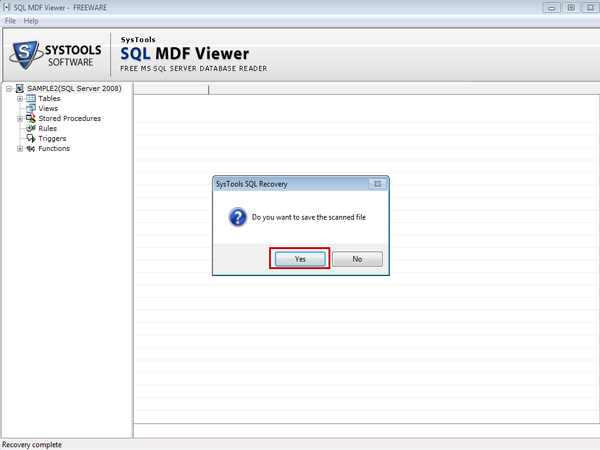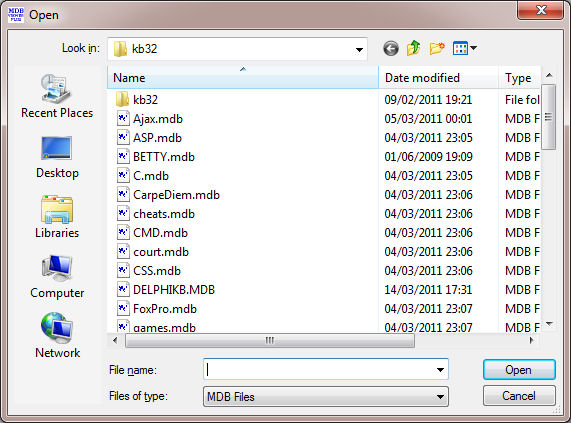

#DB FILE VIEWER PORTABLE#

Standard search and partial word search.Table opening, viewing and inline editing.
#DB FILE VIEWER HOW TO#
The different ways of how to open MDB files, Receive and error "Provider can't be found. If you do not have the Access Database Engine installed you will You can download the AccessĢ007 database engine from Microsoft's website.
#DB FILE VIEWER INSTALL#
Have Access 2007 or higher installed you will need to install the MicrosoftĪccess 2007/2010 database engine first as a prerequisite. To open an ACCDB file select "ACCDB files" from the drop down box on the openĭialog labelled "Files of type:" then select your Accdb. Your desktop to MDB Viewer Plus and specify the MDB file as a runtime parameter. If you are always using the same MDB or ACCDB file, you can create a shortcut on You can associate MDBĪnd Accdb files with MDB Viewer Plus so that they open with MDB Viewer Plus when If you need to open and view many MDB files frequently. Workgroup files (MDW) can be specified using the open options. Workgroup files if specified in the open options. MDB Viewer Plus can be used to open MDB files and Accdb files ACCDB is the newerīoth Accdb and MDB files can be opened with MDB Viewer Plus. The logs include Audit Collection and Windows NT.MDB and ACCDB files are Microsoft Access Database files. In Object Explorer, expand Security, expand Audits, right-click an audit, and then click View Audit Logs. To view logs that are related to audits collections The logs include Database Mail, Job History, Maintenance Plans, Remote Maintenance Plans, SQL Server, SQL Server Agent, and Windows NT. In Object Explorer, expand Management, right-click Database Mail, and then click View Database Mail Log. To view logs that are related to Database Mail The logs include Data Collection, Job History, and SQL Server Agent. In Object Explorer, expand Management, right-click Data Collection, and then click View Logs. To view logs that are related to Data Collection The logs include Database Mail, Job History, Maintenance Plans, Remote Maintenance Plans, and SQL Server Agent. In Object Explorer, expand Management, right-click Maintenance Plans, and then click View History. To view logs that are related to maintenance plans The logs include Database Mail, Job History, and SQL Server Agent. In Object Explorer, expand SQL Server Agent, right-click Jobs, and then click View History. The logs include Database Mail, SQL Server, SQL Server Agent, and Windows NT. Right-click SQL Server Logs, point to View, and then click either SQL Server Log or SQL Server and Windows Log.Įxpand SQL Server Logs, right-click any log file, and then click View SQL Server Log. View Log Files To view logs that are related to general SQL Server activity

Requires membership in the securityadmin fixed server role.
#DB FILE VIEWER OFFLINE#
For more information, see the Security section of the topic View Offline Log Files. To access log files for instances of SQL Server that are offline, you must have read access to both the Root\Microsoft\SqlServer\ComputerManagement10 WMI namespace, and to the folder where the log files are stored. To access log files for instances of SQL Server that are online, this requires membership in the securityadmin fixed server role. You can open Log File Viewer in several ways, depending on the information that you want to view.

For more information about how to access offline SQL Server log files, see View Offline Log Files. For more information about online access, see the procedure "To view online log files from Registered Servers" later in this topic. By using Registered Servers, you can view the log files when the instances are either online or offline. Windows events (These Windows events can also be accessed from Event Viewer.)īeginning in SQL Server 2012 (11.x), you can use Registered Servers to view SQL Server log files from local or remote instances of SQL Server. You can use Log File Viewer in SQL Server Management Studio to access information about errors and events that are captured in the following logs:


 0 kommentar(er)
0 kommentar(er)
